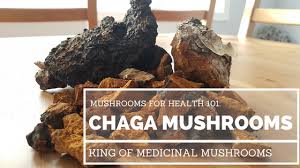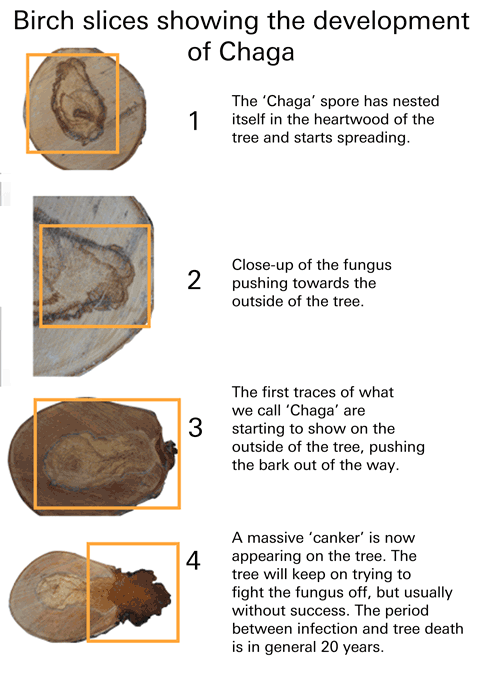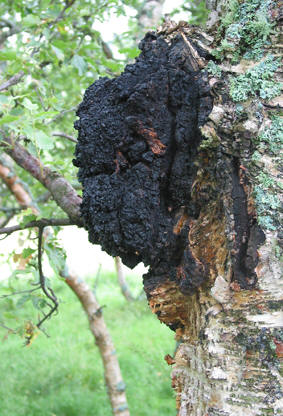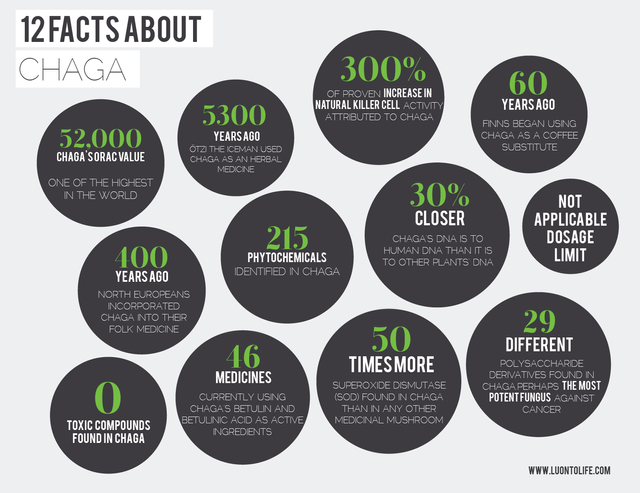The 4 Medicinal Mushrooms You should Know About. Part 1: Chaga
My intention for this post is to introduce the people that don't already know about chaga to it's amazing benefits

Chaga is often called "the king of medicinal mushrooms" because of it's health benefits. Chaga grows on birch trees in Scandinavia, Eastern Europe, Russia, Korea and the northern parts of North America. But rarely in large quantities and often on older birch trees that are damaged by storms or are by the side of a road where they are more exposed. It lives in harmony with the tree and is also quite rare, said to be on something like 1 in 10 000 birch trees. Chaga also takes a lot of time to grow, a decent size fungus can be 7 years or more in the making. Here is a picture of how it develops and how it looks on a birch tree.


Many people report that Chaga has been used since ancient times but that is difficult to prove. What we can say for sure is that it has long traditions and has long been called "the king of herbs" and "black gold". I always try to keep my eyes open for this when I'm walking by birch trees. It is also important if you find it that you don't take the hole thing but let some of it be because you can kill the tree if cut of everything. The best time to harvest is said to be fall or early winter. At that time it is also easier to spot on the tree because the leaves will have fallen.
Some of the beneficial compounds in the Chaga mushroom
You can Google these compounds individually if you want to dig deep
Polysaccharides
Chaga contains structural polysaccharides within its chitin walls, which provide energy, cardiovascular health, intestinal and liver health, and promote healthy blood sugar levels. It’s also said to improve one’s mood.Beta-D-Glucans
Beta-D-Glucans are known for their ability to modulate the immune system. Beta-D-Glucans also help with normalizing cholesterol levels and blood sugar.Phytosterols
Of the phytosterols present in chaga, 45% is Lanosterol, 25% is Inotodiols and the remaining 30% consists of Ergosterol, Fecosterol, and several others. Studies show a direct effect of both Lanosterol and Inotodiols on cancer cells, with lanosterol imparting a positive effect on viral compounds.Betulin and Betulinic Acid (Triterpenes)
Betulin and betulinic acid are powerful therapeutic agents that are currently being researched for their effects on supporting healthy cholesterol levels. In addition to their favorable benefits for maintaining a healthy cholesterol profile, betulin and betulinic acid are also being studied in relation to cancer and viruses.Antioxidants
Chaga sclerotium contains large amounts of the natural black pigment known as melanin, which has high antioxidant levels due to the amount of polyphenols it contains. Chaga is said to have the highest ORAC score (the measure of antioxidant potency) of any superfood. Include the outer layer of the chaga as this contains the most melanin.SODs
SODs are another important antioxidant present in chaga. SOD refers to a group of enzymes called Super Oxide Dismutase. These enzymes play an important role in protecting our body against the destructive effects of uncontrolled oxidation and free radicals.
It is also rich in Ionized trace minerals (copper, selenium, zinc, magnese, iron), ionized essential minerals (magnesium, potassium, calcium, chloride, sodium, phosphorus)
-
Health benefits of chaga
Stimulates and regulates the immune system (potent adaptogen)
Potent anti cancer
Anti-aging and skin benefits (can also be used to make skin care for topical application)
Reduces inflammation
Helps protect the liver
Proven to positively affect various stomach diseases and ulcers
Calms the nervous system
Increases physical endurance
Promotes cognitive function
The most typical way to consume Chaga is as a tea, from either dried chunks or powder. You can make it with fresh also if you just harvested some.
We break it into chunks and then we dry it in the sun and keep it in closed metal box after it is dried.
Making tea:
Then you just pick a chunk or two and grind it in a coffee grinder and add about 1-2 tbls per cup of tea depending on how strong you want it. Let it steep for a little while with a top on to extract most of the bioactive compounds. Longer is better. If using chunks it should be hours. Shorter for powder but I do at least 10 min, usually a lot more. Chunks you can use a few times over but should be steeped for many hours.
And other way to consume it is making(or buying) a tincture, if you want to make it you will need vodka and some patience.
I would do 1 : 1 with vodka and small chaga chunks and let it sit for 4 weeks. Shaking it every day. After 4 weeks separate the liquid and Chaga. Then take the Chaga with 1 : 1 with water and let it simmer with the top on for 24 hours. After that mix the vodka liquid with the water and you have a dual extract. There is much info on this online.
I really prefer the tea, it tastes really good. Sometimes just plain or with coconut milk and honey. Another possibility is to add small amount of finely grinded powder to you Bulletproof Coffee(aka butter coffee) if you too are one of those weirdos :D
If you want to buy chaga tea "4 Sigmatic Foods" make some really good ones.
Hope you enjoyed the read and that you too will keep your eyes open when walking by birch trees.
Nearly everything you do is of no importance, but it is important that you do it.
- Mahatma Gandhi
The best Mushroom there is! one of them ;) GREAT ARTICLE DEAR :D
bien hecho!! es sorprendente